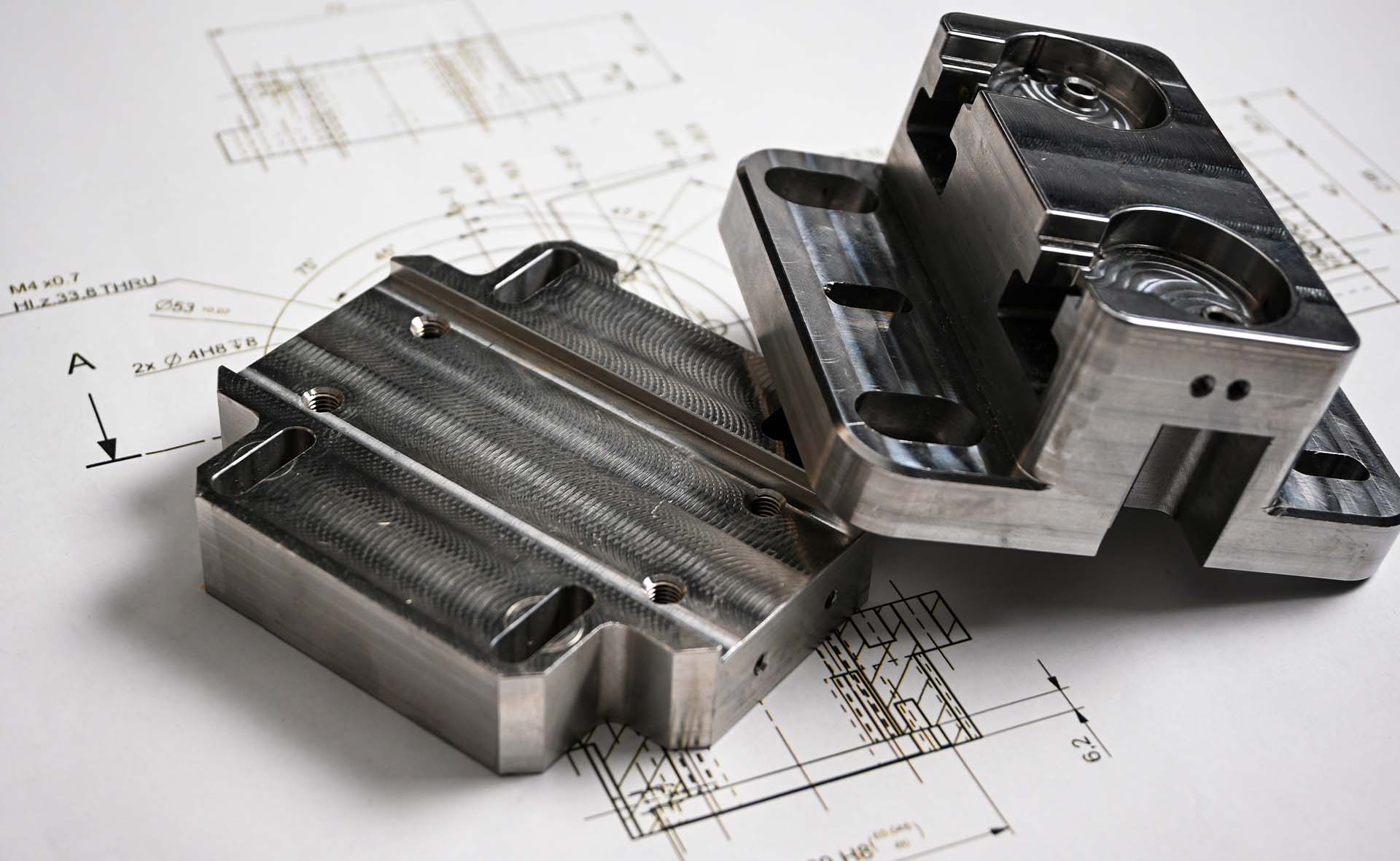Can injection moulding be used for metal? Yes. This process is known as metal injection moulding (MIM) – sometimes called Powdered Injection Molding (PIM). Like plastic injection moulding, MIM is a cost-effective and efficient process that can be used for a wide range of applications.
What is metal injection moulding, and how does it work? Learn the basic principles and fundamental mechanics, as well as the key benefits and limitations of this manufacturing process in this article.
What is Metal Injection Moulding?
Metal injection moulding, or MIM, was first developed in the 1970s by Raymond Wiech in the US, but it has only been used commercially in the last twenty years. It combines the geometrical complexity possible from injection moulded plastic with the mechanical properties of high-performance metallic alloys. Components can be produced in a wide range of metals – steels, aluminum and titanium – and can be subjected to secondary treatments.

Despite there being a great contrast between the MIM and die casting processes, these two technologies are often compared as they are two of the most economical manufacturing processes for producing large bulks of complex-shaped metal components (over 100,000 parts).
How Does Metal Injection Moulding Work?
MIM involves four main steps: feedstock preparation, injection moulding, debinding and sintering. A simple concept, a complex process.
- Step 1: Feedstock Preparation – This stages involves blending very fine metal powders with polymer binders to achieve the desired material properties. The mix is then heated into a viscous mass. The mass gradually cools down and is processed into granular pellets to form the “feedstock.
- Step 2: Injection Moulding – Next, the feedstock is heated and injected into a mould cavity under high pressure, allowing for extremely complex shapes. Once the MIM component is removed, it is referred to as a “green” part.
- Step 3: De-binding – In this stage, the “green” part is put through a controlled process called “debinding” that involves removing the binder, preparing the part for the final step. Once, debinding is complete, the component is referred to as “brown.”
- Step 4: Sintering – After debinding, the brown part enters a continuous sintering process, where the parts are thermally processed in a controlled atmosphere to form a high-density metal component. During this sintering process, an approximate 16 to 18 percent shrinkage occurs, which results in products with densities approaching 98 percent of the theoretical density for a given alloy.
Pro Tip: It is vital to account for this shrinkage and ensure operating conditions and carefully controlled in order to achieve needed dimensional and performance requirements.
After the final MIM component is made, the characteristics and properties of the part can be further amplified or optimized by a wide range of secondary operations, including heat treatment, physicochemical surface treatment, chemical surface treatment, mechanical surface treatment, nonmetallic coatings, metallic coatings, organic coatings, and wear resistant coatings.
Materials Use in MIM
The metal injection moulding process is compatible with a wide selection of metals. Below is a list of metals available at HLH Rapid and their characteristics.
| Steel | - Good durability
- Can withstand a great deal of wear and tear
- Good corrosion resistance
|
| Titanium | - Excellent durability
- Good strength-to-weight ratio
- Good corrosion resistance
|
Advantages Of MIM
- Low Unit Price: Like plastic injection moulding, metal injection moulding offers a significantly lower unit price. This makes it a cost-effective solution for producing higher volumes of metal parts.
- Little to No Post-Processing Required: Due to the nature of the process, MIM can eliminate several product finishing (post-processing) steps, decreasing the time to manufacture ready-made components.
- Accuracy and Precision: MIM offers excellent accuracy and precision. It is often used to produce intricate shape parts with very tight and precise tolerances, which makes it ideal for high-end applications, such as in the aerospace, aviation and automotive industries.
Disadvantages Of MIM
- High Initial Investment: Like plastic injection moulding, MIM demands a higher front-end cost.
- Design Changes Are Expensive: Design modifications will require mould modifications or even creating a new mould from scratch, which can significantly increase costs.
- Longer Initial Lead Time: It can take between 4-8 weeks to manufacture tooling before you can begin manufacturing the parts.
Metal Injection Moulding With HLH
Considering the metal injection moulding process for your project? Contact our team of experts at info@hlhrapid.com for advice or upload your CAD file here for a DFM and quotation. Use HLH’s MIM services to get custom industrial grade components in as fast as 3 weeks.

